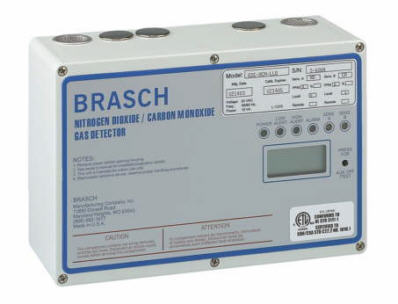 With increased concerns of healthy indoor air quality and energy efficiency, there has of late been a higher demand for gas detectors and IAQ controllers in the HVAC market. Specifically, the most common type of gas detector/ventilation controller is the CO2, or Carbon Dioxide Detector. These controllers sense CO2 levels and, once they reach a high enough level, will send a signal to control ventilation equipment in order to remove and replace air in the space. Typically these sensor will send a proportional signal to a damper motor that will modulate accordingly to allow fresh air to enter the space. Additionally, many controllers also have relays that will open or close contacts to power on or off exhaust and/or make-up fans.
With increased concerns of healthy indoor air quality and energy efficiency, there has of late been a higher demand for gas detectors and IAQ controllers in the HVAC market. Specifically, the most common type of gas detector/ventilation controller is the CO2, or Carbon Dioxide Detector. These controllers sense CO2 levels and, once they reach a high enough level, will send a signal to control ventilation equipment in order to remove and replace air in the space. Typically these sensor will send a proportional signal to a damper motor that will modulate accordingly to allow fresh air to enter the space. Additionally, many controllers also have relays that will open or close contacts to power on or off exhaust and/or make-up fans.
Carbon Dioxide, CO2, Detectors monitor spaces occupied by people or animals to remove excess CO2, which is a byproduct of breathing. High levels of CO2 are associated with what is known as “Sick Building Syndrome“. Most building code regulations require a certain amount of air replenishment, or turnover, to avoid high buildup of CO2 and the resulting health problems. CO2 Detectors are typically available with adjustable setpoints, analog signals, and one or more relays.
Carbon Monoxide and Nitrogen Dioxide, CO, NO2, Detectors are utilized in spaces where internal combustion engines are operated: parking garages, service garages, small engine shops, warehouses, underground garages, generator rooms. Carbon Monoxide is a byproduct of the combustion of gasoline, where Nitrogen Dioxide is a byproduct of the combustion of diesel fuel. Much like CO2 controllers, these units monitor gases and send a proportional analog signal, and/or make relay contacts to stage fans in order to replace toxic air in a given space.
While it is possible to just maintain a constant ventilation rate, that is typically not preferable as ventilation rates should match demand and with these gases demand typically varies. In addition, as noted in a previous post, building ventilation and the associated building pressure should be balanced. Therefore, in most cases a demand-control system is preferable. This type of system will remove toxic air as needed, and at the same time replace that air with an equivalent amount of fresh make-up air. The driving factor in the system is a properly-applied IAQ Gas Detector/Controller.
RJ Owen Associates offers gas detectors by Brash Manufacturing and other manufacturers, system analysis, design, installation, commissioning, replacement and repair services. 336-869-7579
